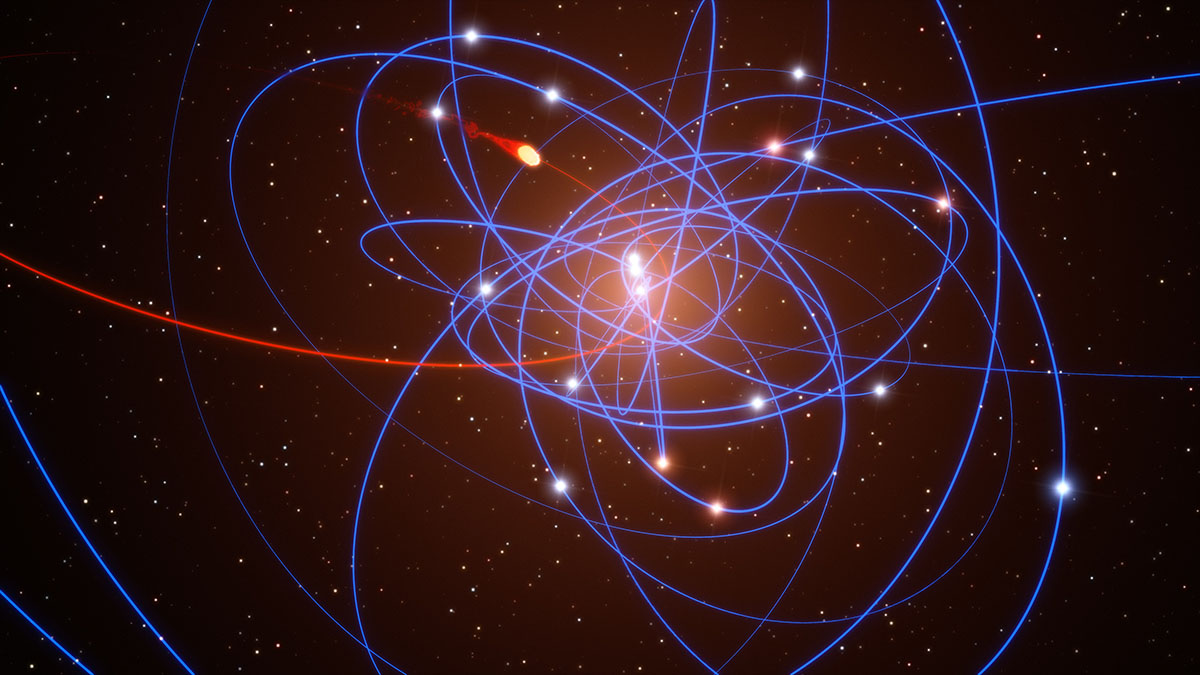black holes and ancient dwarf galaxies

Two of the questions anyone who writes extensively about black holes gets is how we actually know where an object that’s powerful enough to funnel photons into is gravitational field really is, and how we can point to the object and decide that it’s a black hole without actually seeing what it is. As the video below shows, it’s just a matter of math. A small group of stars moving at high enough speeds have to point to a black hole.
Now, the interesting tidbit in this video is the globular cluster in question; Omega Centauri. With 130,000 stars of different ages, a rarity for these objects, it orbits the Milky Way about 15,800 light years away and a number of researchers have been speculating that it’s actually a remnant of a small galaxy that collided with our own and was stripped of everything but its spherical core. Normally, globular clusters host old stars that haven’t fused a lot of metal in their cores. But Omega Cen shows signs of ancient star birth and is home to several generations of different suns. Even odder is its retrograde orbit. Rather than follow the direction of the galaxy’s rotation, this globular cluster whips around the galactic halo the other way on a slightly eccentric path. And it’s also very close to the galactic plane, another very unusual trait for globular clusters.
This is why in 1999, a group of astronomers laid out the case that Omega Cen was once a small, spherical galaxy that was captured by the Milky Way and underwent a process called tidal stripping. No, our galaxy didn’t get out its dollar bills and watch while Omega Cen shed its stars. Instead, gravity drew stellar matter into the Milky Way’s spiral arms until the remaining core in which stars are estimated to be just 600 billion miles apart at their densest (or about 44 times closer than the Sun and its closest neighbor), was left orbiting the galactic halo. And this is where the finding of a 40,000 solar mass black hole at the center of Omega Cen becomes a lot more tantalizing than just a strangely massive object in the heart of an odd stellar cluster.
We know that galaxies have supermassive black holes at their centers. These monsters tip the scales at an awe-inspiring several million to several billion solar masses and play an important role in determining how fast the galaxy rotates. The giant in the heart of our stellar home is Sagittarius A* which is estimated to be a pitch black sphere around 14 million miles across with a gravitational footprint of 4 million suns. The black hole at the center of Omega Cen is just 100 times smaller than that. Should we take it as more proof that this globular cluster was once a fully fledged dwarf galaxy? And what does this finding mean for dwarf galaxies in general? Are we looking at another case of classification by size in which the only difference between a galaxy like ours and a dwarf galaxy is scale? Is this the next Pluto debacle but on a galactic scale?
See: S.R. Majewski, et al. (1999). Omega Centauri: Nucleus of a Milky Way Dwarf Spheroidal? Proceedings of the 35th Liege International Astrophysics Colloquium arXiv: astro-ph/9910278v2





